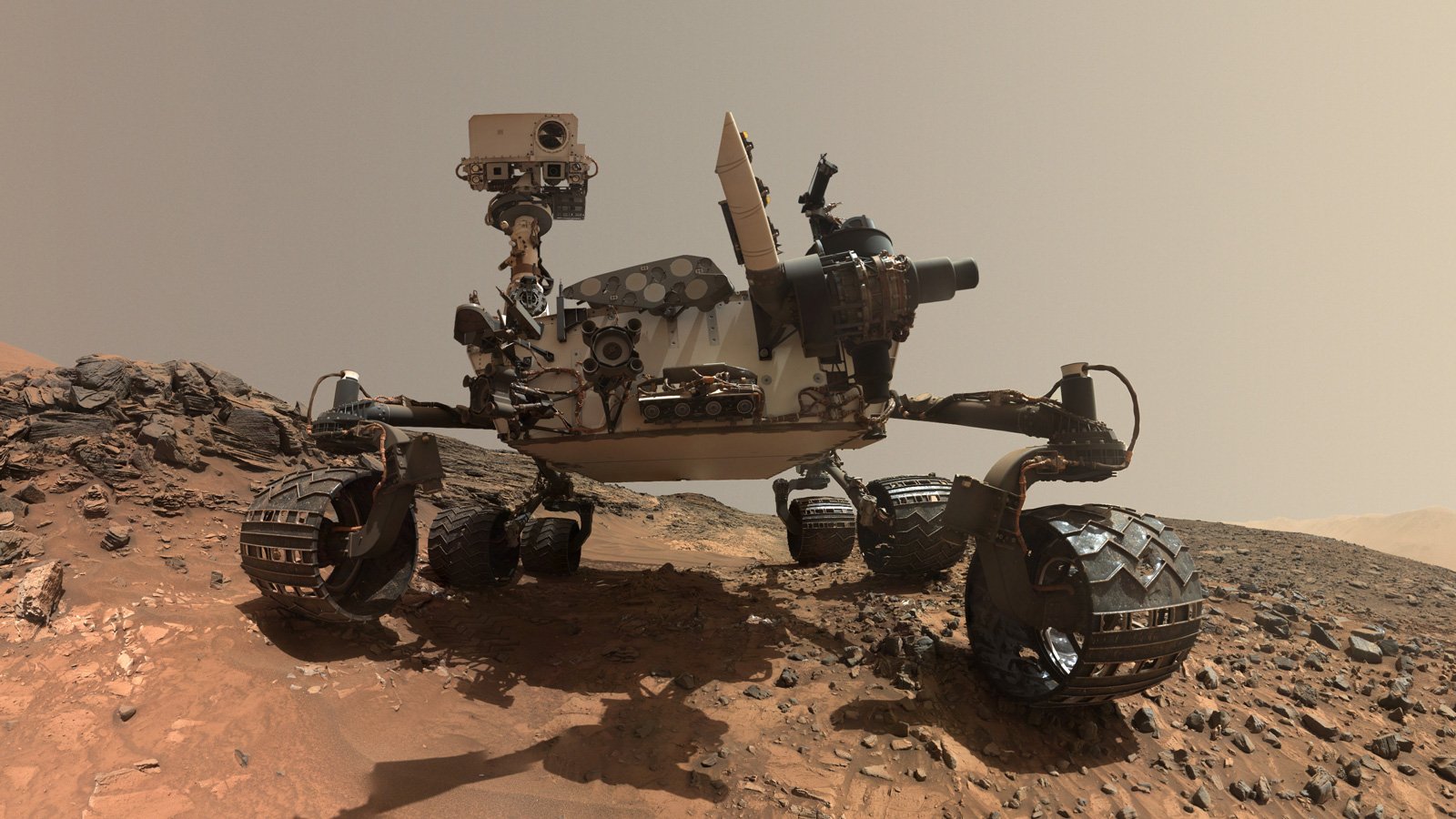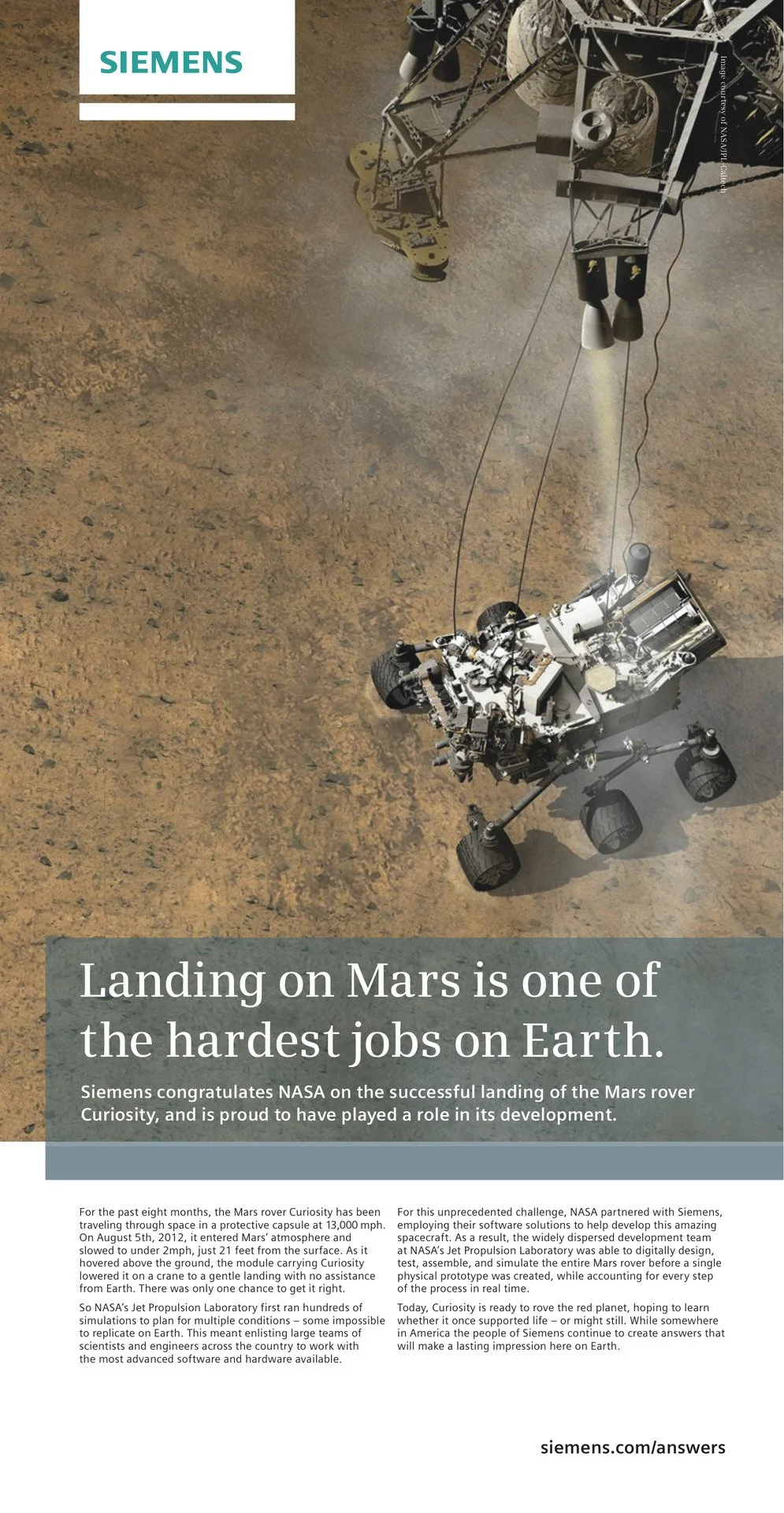
This was a fun one. While working on the Siemens brand, we got the chance to collaborate with NASA in celebration of the landing of the Mars Rover Curiosity. Using a traditional long-copy full page newspaper format which ran in several national outlets, we told the story of how Siemens helped the Jet Propulsion Lab run the programs, and test the software that would get Curiosity to Mars. Online, we took over the Wired homepage, using an animated image of Curiosity, which flew around the page, leaving burn marks on the headlines of the day with the jet boosters from its famous landing process. This was new to us, Wired, Siemens, and even our developers. It was a real thrill to innovate in the media spaces while highlighting all the innovations perfected by Siemens, NASA, and the JPL in the space space.
(Newspaper ad copy transcribed below for legibility.)
NEWSPAPER AD COPY:
For the past eight months, the Mars rover Curiosity has been traveling through space in a protective capsule at 13,000 mph.
On August 5th, 2012, it entered Mars atmosphere and slowed to under 2mph, just 21 feet from the surface. As it hovered above the ground, the module carrying Curiosity lowered it on a crane to a gentle landing with no assistance from Earth. There was only one chance to get it right.
So NASA's Jet Propulsion Laboratory first ran hundreds of simulations to plan for multiple conditions - some impossible to replicate on Earth. This meant enlisting large teams of scientists and engineers across the country to work with the most advanced software and hardware available.
For this unprecedented challenge, NASA partnered with Siemens, employing their software solutions to help develop this amazing spacecraft. As a result, the widely dispersed development team at NASA's Jet Propulsion Laboratory was able to digitally design, test, assemble, and simulate the entire Mars rover before a single physical prototype was created, while accounting for every step of the process in real time.
Today, Curiosity is ready to rove the red planet, hoping to learn whether it once supported life - or might still. While somewhere in America the people of Siemens continue to create answers that will make a lasting impression here on Earth.
